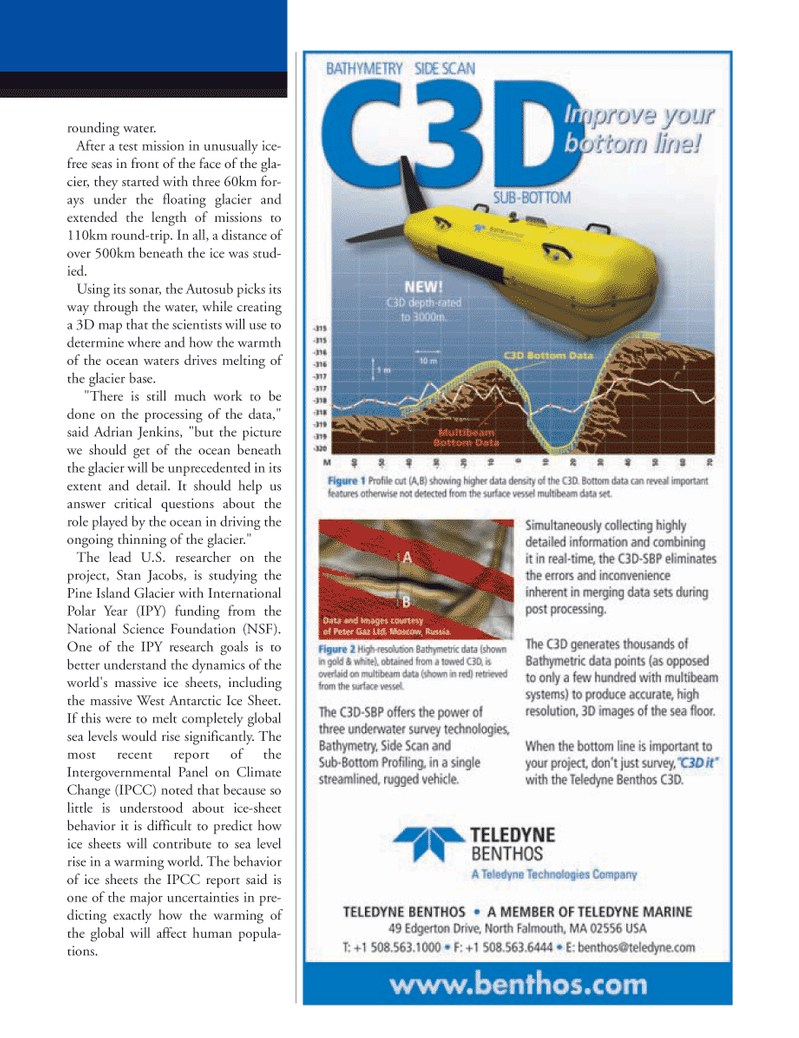
Page 11: of Marine Technology Magazine (April 2005)
Read this page in Pdf, Flash or Html5 edition of April 2005 Marine Technology Magazine
rounding water.
After a test mission in unusually ice- free seas in front of the face of the gla- cier, they started with three 60km for- ays under the floating glacier and extended the length of missions to 110km round-trip. In all, a distance of over 500km beneath the ice was stud- ied.
Using its sonar, the Autosub picks its way through the water, while creating a 3D map that the scientists will use to determine where and how the warmth of the ocean waters drives melting of the glacier base. "There is still much work to be done on the processing of the data," said Adrian Jenkins, "but the picture we should get of the ocean beneath the glacier will be unprecedented in its extent and detail. It should help us answer critical questions about the role played by the ocean in driving the ongoing thinning of the glacier."
The lead U.S. researcher on the project, Stan Jacobs, is studying the
Pine Island Glacier with International
Polar Year (IPY) funding from the
National Science Foundation (NSF).
One of the IPY research goals is to better understand the dynamics of the world's massive ice sheets, including the massive West Antarctic Ice Sheet.
If this were to melt completely global sea levels would rise significantly. The most recent report of the
Intergovernmental Panel on Climate
Change (IPCC) noted that because so little is understood about ice-sheet behavior it is difficult to predict how ice sheets will contribute to sea level rise in a warming world. The behavior of ice sheets the IPCC report said is one of the major uncertainties in pre- dicting exactly how the warming of the global will affect human popula- tions.
MTR#3 (1-17).qxd 3/27/2009 1:47 PM Page 13

 10
10

 12
12
